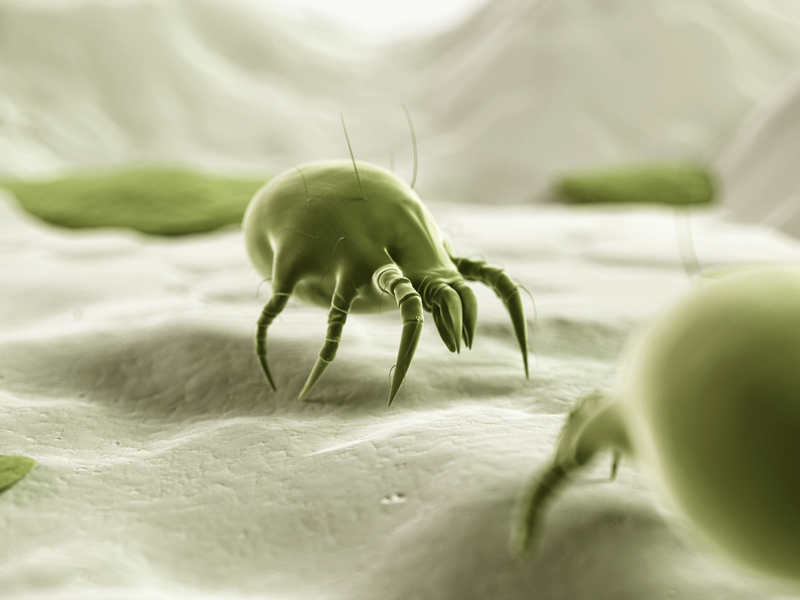Get Your Stovetop Gleaming Again with Stress-free Burnt Residue Techniques
Posted on 20/09/2025
Get Your Stovetop Gleaming Again with Stress-free Burnt Residue Techniques
Are you tired of fighting stubborn burned-on food and greasy stains on your stovetop? If so, you're not alone! A clean, sparkling stovetop elevates your entire kitchen, but burnt residue can be a persistent nuisance. The good news: restoring brilliance to your stovetop doesn't have to be an overwhelming chore. In this comprehensive guide, we'll explore stress-free techniques for removing burnt residue and transforming your cooktop back to its gleaming best. Whether you have a gas, electric, or glass stovetop, these expert tips will help you conquer even the toughest burnt messes--with ease and confidence.
Why Burnt Residue Builds Up: Understanding the Problem
Before you tackle the cleaning process, it's helpful to understand why burnt-on residue accumulates.
- Spills and Splashes: Everyday cooking, especially boiling and frying, can cause food and liquids to spill onto your stovetop. If not cleaned immediately, these bits can rapidly become burnt and stuck.
- High Heat: Excessive or uneven heating may cause certain foods to burn onto the surface.
- Oil and Grease: Greasy splatters easily carbonize, leaving tough, sticky spots that are hard to scrub off.
- Delayed Cleaning: The longer residue sits, the harder it gets, making fast action crucial.

Gathering the Right Supplies: What You'll Need
To truly get your stovetop gleaming again, you need the proper tools and cleaners. Here's a helpful checklist:
- Microfiber cloths (soft yet effective for polishing)
- Non-abrasive scrubbing pads or sponges (safe for most surfaces)
- Baking soda (a gentle natural abrasive)
- White vinegar (cuts grease and cleans)
- Lemon juice (natural degreaser and deodorizer)
- Dish soap (removes oily residues)
- Plastic scraper or a razor blade (for glass tops only)
- Spray bottle with water
- If needed: stovetop-specific cleaner or degreaser
- Old toothbrush (for tackling tough crevices)
Tip: Always check your stovetop manufacturer's instructions before using any cleaning products to prevent damage!
Step-by-Step Guide: Removing Burnt-on Residue the Easy Way
Step 1: Safety First - Cool Down and Unplug
Never attempt to clean your stovetop while it's still hot. Allow it to cool completely and, if possible, unplug your appliance or turn off the gas supply. This will keep you safe and prevent burns.
Step 2: Wipe Away Loose Debris
Start by using a damp microfiber cloth to gently wipe away any loose crumbs or debris. This will make the next steps more effective.
Step 3: Pre-Soak Burnt Areas
Mix equal parts white vinegar and water in a spray bottle. Spray generously over any burnt residue, ensuring the spots are well saturated. Let this soak for 10-20 minutes. The acidity will help break down grime and loosen stubborn stains.
- For extra-tough spots, sprinkle baking soda on top first, then spray with vinegar. You'll see fizzing action as the mixture works to dissolve residue.
Step 4: Gently Scrub
With your non-abrasive scrubber or sponge, worked in circular motions, begin scrubbing the stained areas. The residue should start to lift away.
- For glass stovetops: Use a plastic scraper or carefully use a razor blade at a slight angle to avoid scratching.
- For gas stovetops: Remove grates and burner caps; you can soak these separately in warm, soapy water for 15-20 minutes, then scrub and rinse.
Step 5: Apply Baking Soda Paste for Persistent Spots
For caked-on or blackened spots, make a thick paste using 3 parts baking soda to 1 part water. Spread it over the stubborn stains and let it sit for 20-30 minutes. Then, scrub again and wipe clean.
Step 6: Rinse and Polish
Wipe the entire area with a clean, damp cloth to remove any cleaner or residue. Then, buff with a dry microfiber towel to bring out the shine.
- Glass stovetops: Use a dry microfiber cloth and polish in circular motions for a streak-free gleam.
- Stainless steel tops: Always wipe in the direction of the grain to avoid streaks.
Specialized Burnt Residue Removal Tips
How to Clean Gas Stovetops
- Remove and soak burners, grates, and caps in hot, soapy water.
- Use an old toothbrush to scrub inside nooks and crannies.
- Before reassembling, dry thoroughly to prevent rust and ensure function.
- Always check that the gas is turned off before cleaning around igniters.
How to Clean Glass or Ceramic Stovetops
- Only use cleaners labeled safe for glass or ceramic.
- For hard residue, use a plastic scraper or razor blade flat against the glass--never gouge or chip the surface.
- Avoid acidic or abrasive powders that could etch the glass.
How to Clean Electric Coil Stovetops
- Remove the coils (if removable) and wipe down with a damp cloth; never submerge electric coils in water.
- Clean the drip pans with baking soda paste for burnt-on spills.
- Dry thoroughly before replacing coils.
Natural DIY Cleaners for a Gleaming Stovetop
Prefer all-natural solutions? Many common kitchen items work wonders against burnt stovetop residue.
- Lemon Juice: Cuts grease and leaves a fresh scent. Combine with salt for a gentle abrasive scrub.
- Baking Soda: Its fine particles lift residue without scratching.
- White Vinegar: Dissolves mineral deposits and breaks up grease.
Combine these ingredients for tough spots: Sprinkle some baking soda, spritz with vinegar, then rub with half a lemon.
Quick Fixes for Minor Stovetop Burns
- If you see a fresh spill or scorch, sprinkle with salt while warm (not hot) to absorb and make scrubbing easier later.
- Use a damp microfiber wipe right away to prevent stains from setting.
Preventing Burnt Residue - Maintenance Is Key
Once you get your stovetop gleaming again with stress-free burnt residue techniques, you'll want to maintain that shine! Here's how:
- Wipe Daily: After each use, let the surface cool, then wipe up spills with a damp cloth to prevent buildup.
- Deep Clean Weekly: Give your stovetop a thorough cleaning once a week, including burners and knobs.
- Use Pot Lids: Cover pans to minimize splatter and spills, especially when frying.
- Monitor Heat: Don't cook on excessively high temperatures that cause spills to carbonize quickly.
- Use Protective Mats: For glass tops, special stovetop mats can catch spills and make cleanup a breeze.
When to Seek Professional Help
Sometimes, despite your best efforts, burnt residue refuses to budge or the damage is deep. If food has seeped under glass surfaces, burner ports are clogged, or you notice warping or discoloration you can't clean, it may be time to call an appliance professional.

Frequently Asked Questions
Is it safe to use a razor on a glass stovetop?
Yes, as long as you use a fresh, clean razor at a low angle and only on glass surfaces. Be gentle and move in one direction to lift residue, never digging in or scraping harshly.
Can I use oven cleaner on my stovetop?
Generally, no--unless the product states it's safe for stovetops. Oven cleaner may be too harsh and could damage surfaces or discolor them.
What if the residue is under the burner?
Remove burner elements (coils or grates) and clean beneath, using brushes or cloth to reach hidden grime. Never use water on electrical contacts!
Which methods work best for different stovetop types?
Always check your manufacturer's recommendations. As a rule:
- Gas: Hot, soapy water and non-abrasive brushes.
- Glass: Baking soda paste, special glass cleaner, and a razor blade for tough residue.
- Electric: Baking soda for pans, damp cloths for coils (never submerged in water).
Final Thoughts: Enjoy a Gleaming Stovetop, Stress Free!
Reclaiming your kitchen's beauty isn't difficult or stressful when you know the right techniques and preventative habits. With the methods outlined above, you can confidently say goodbye to stubborn burnt-on messes and keep your stovetop sparkling, no matter how much you cook.
So, gather your favorite cleaning tools, choose a proven technique, and get your stovetop gleaming again with stress-free burnt residue removal. Your future self will thank you every time you step into a clean, inviting kitchen!



